Structural Design Financial Model

5-Year Financial Projections
100% Editable
Investor-Approved Valuation Models
MAC/PC Compatible, Fully Unlocked
No Accounting Knowledge Needed
Structural Design Financial Model
Bundle Includes:
-
Financial Model
-
Business Plan
-
Pitch Deck
-
Financial Dashboard
ALL IN ONE MEGA PACK - CONSIST OF:
Structural Design Financial Model/Business Plan Excel Template
Pitch Deck Template For PowerPoint, Keynote & Google Slides
Business Plan Guide and Business Plan Template in MS Word Format
Financial Dashboard in Excel To Track Your Business Performance
STRUCTURAL DESIGN FINANCIAL MODEL FOR STARTUP INFO
Highlights
This advanced structural design financial model template offers a comprehensive 5-year cash flow projection, including detailed cash flow statements and a dynamic financial dashboard featuring core financial metrics compliant with GAAP/IFRS standards. Designed specifically for structural engineering projects, it integrates key financial modeling techniques such as budgeting, cost estimation, risk analysis, and financial sensitivity analysis to enhance financial planning and capital budgeting efforts. The model supports scenario analysis and investment analysis, providing a robust framework for evaluating the economic viability and profitability of structural design projects. Fully unlocked for customization, this financial forecasting tool enables precise financial reporting and long-term financial planning to help secure funding from banks or investors with confidence.
This ready-made financial model for structural engineering projects addresses common pain points such as complex cost estimation and risk analysis by providing automated budgeting and cash flow modeling for structural design, enabling accurate financial planning and forecasting with ease. It incorporates advanced financial metrics and scenario analysis to evaluate project financial viability, supporting capital budgeting decisions and investment analysis while allowing comprehensive financial sensitivity analysis to adapt to changing conditions. By leveraging structural engineering financial model templates, users can streamline profitability modeling, conduct thorough economic evaluation, and generate reliable financial reporting, ultimately enhancing long-term financial planning and improving decision-making for structural design projects.
Description
A comprehensive financial model for structural engineering projects integrates advanced structural design financial forecasting methods and cost estimation techniques to ensure accurate budgeting and financial planning for structural design projects. By utilizing scenario analysis in structural design financial models and financial sensitivity analysis, the model enables detailed risk analysis in structural design financial models, allowing users to assess financial viability and profitability modeling for engineering ventures. Through cash flow modeling for structural design and capital budgeting for structural projects, the model facilitates investment analysis and economic evaluation of structural design projects, supported by structural engineering financial model templates that include financial metrics in structural design models and reporting capabilities. This holistic approach to structural design cost-benefit financial models enhances long-term financial planning for structural projects while supporting effective financial reporting for structural engineering models.
STRUCTURAL DESIGN FINANCIAL MODEL FINANCIAL MODEL REPORTS
All in One Place
Our structural design financial model template offers comprehensive financial forecasting by integrating your company’s core reports—pro forma profit and loss, projected 5-year balance sheet, and cash flow model in Excel. Unlike simplified models relying solely on profit and loss forecasts, our template enables robust scenario analysis, risk assessment, and financial sensitivity analysis. This dynamic approach ensures accurate budgeting, cost estimation, and investment analysis, empowering you to evaluate structural design project financial viability effectively. Leverage our model for informed financial planning, capital budgeting, and profitability modeling, driving strategic decisions with clarity and confidence.

Dashboard
This comprehensive dashboard integrates key financial metrics essential for structural design project viability, featuring core KPIs from proforma income statements, projected balance sheets, and detailed cash flow modeling. Designed for expert financial planning and capital budgeting, it delivers a 5-year outlook tailored for structural engineering projects. Interactive graph and chart options enhance stakeholder presentations, empowering clear communication of risk analysis, investment analysis, and budgeting insights within structural financial forecasting models. This all-in-one tool elevates scenario analysis and profitability modeling to optimize decision-making in structural design financial models.
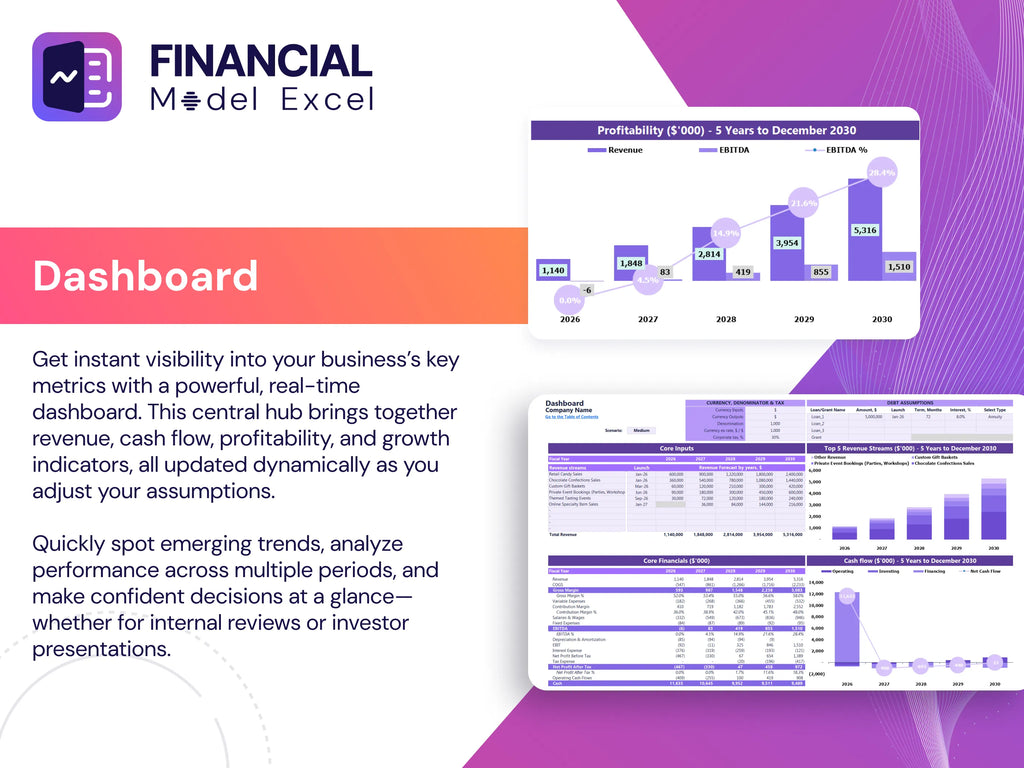
Business Financial Statements
Effective financial modeling for structural engineering projects requires a comprehensive, bottom-up approach that integrates cost estimation, cash flow modeling, and risk analysis. Ensuring your structural design financial model is intuitive and includes key financial metrics enhances financial planning, budgeting, and investment analysis. An easily navigable model is crucial for clear financial reporting and supports scenario and sensitivity analysis, facilitating sound capital budgeting and long-term financial forecasting. This clarity not only improves the structural design project’s financial viability but also builds confidence among stakeholders reviewing your financial projections.
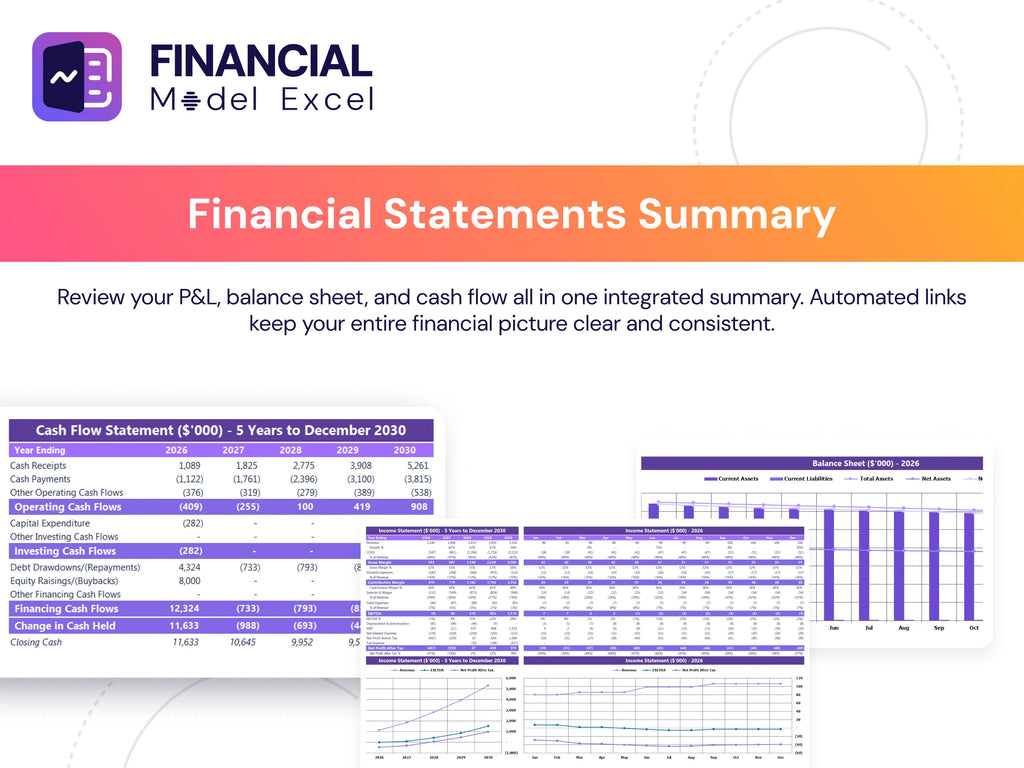
Sources And Uses Statement
The startup costs spreadsheet serves as a vital tool for financial planning in structural design projects. It highlights precise cost estimation and budgeting in structural engineering financial models, ensuring optimal allocation of funds. By integrating financial metrics and risk analysis in structural design financial models, this tool supports cash flow modeling and investment analysis, driving profitability modeling and long-term financial planning. Utilizing structural engineering financial model templates, it empowers stakeholders to evaluate project financial viability and perform scenario analysis, fostering informed decision-making and sustained revenue growth.
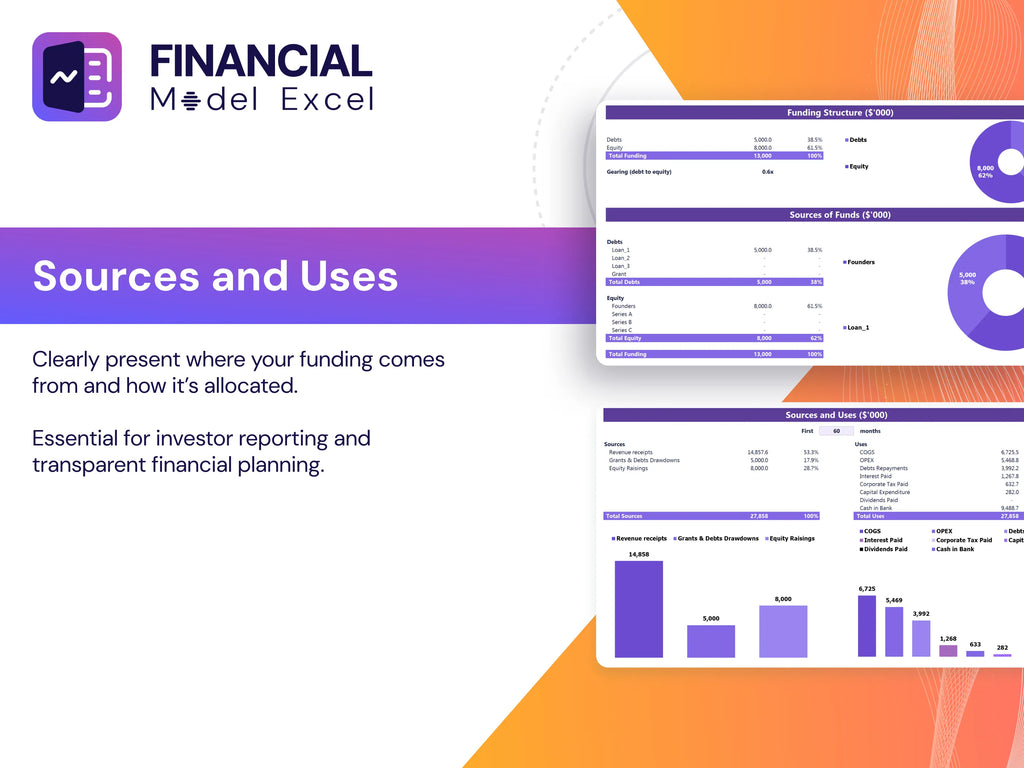
Break Even Point In Sales Dollars
Break-even analysis is a critical financial metric in structural design financial models, indicating when a project’s revenue covers all costs, achieving neither profit nor loss. This technique is essential for budgeting in structural engineering financial models, enabling precise cost estimation and cash flow modeling. By integrating break-even analysis with financial sensitivity and risk analysis, firms can enhance structural financial forecasting methods and ensure the financial viability of structural design projects. Utilizing comprehensive financial model templates supports effective capital budgeting and long-term financial planning, empowering better investment analysis and profitability modeling in structural engineering projects.
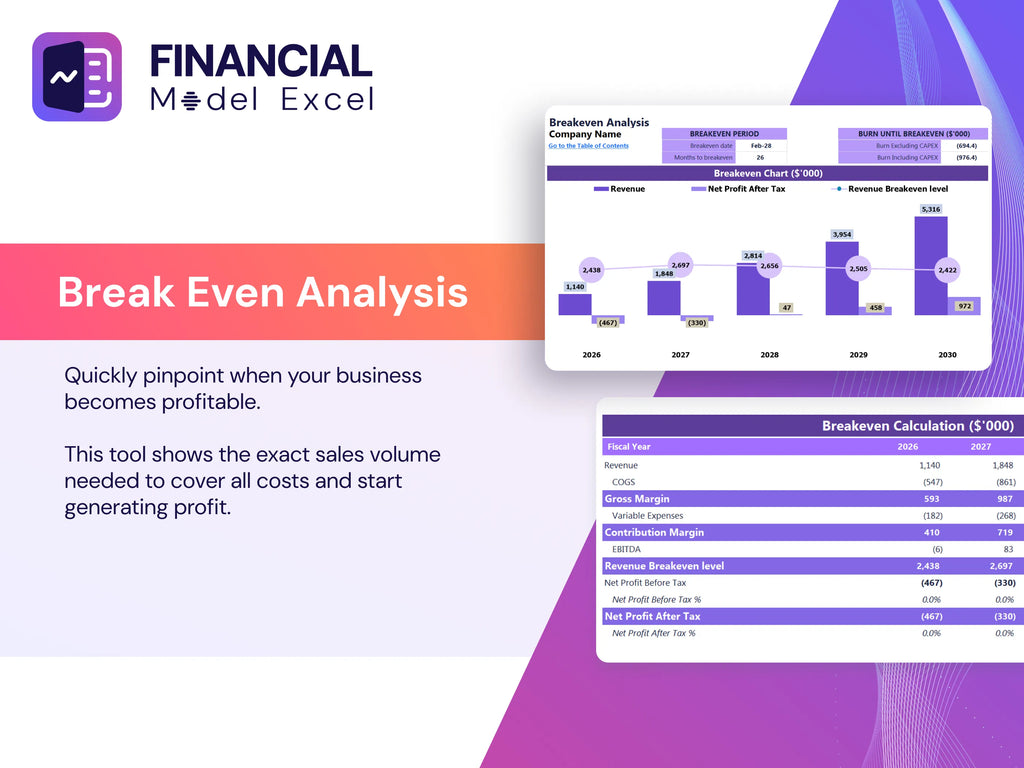
Top Revenue
The Top Revenue tab enables demand reporting within your structural design financial model, highlighting profitability and scenario-based financial viability to inform strategic decisions. Using the 5-year financial projection Excel template, you can build a detailed revenue bridge analyzing key drivers like product volume and unit pricing. This financial forecasting method supports accurate demand predictions across periods, aiding budgeting, cash flow modeling, and resource allocation for your sales team. Integrating scenario and sensitivity analysis ensures robust financial planning and investment analysis, maximizing profitability modeling and optimizing capital budgeting for structural design projects.
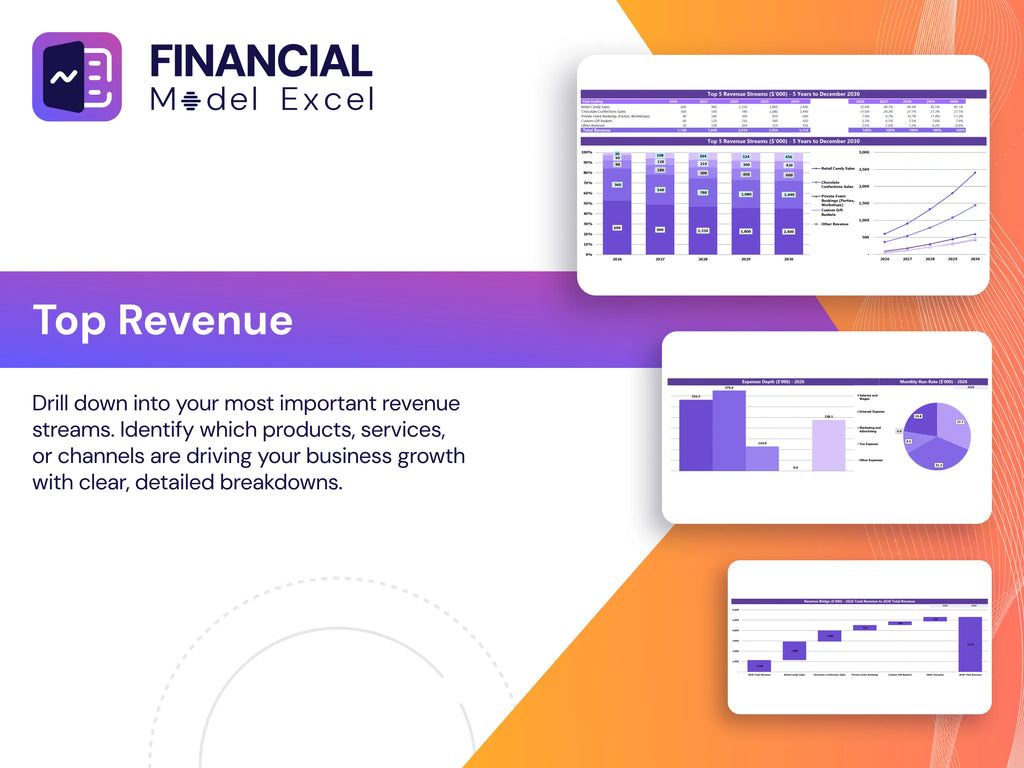
Business Top Expenses Spreadsheet
Understanding the origins of your spending is essential for effective financial planning in structural design projects. The Top Expenses feature in structural engineering financial model templates categorizes costs—such as customer acquisition, fixed, and variable expenses—providing clear visibility into your expense drivers. Utilizing cost estimation and budgeting techniques within these models enables precise financial forecasting and risk analysis. This strategic insight supports scenario analysis and capital budgeting, ensuring optimal allocation of resources and enhancing the structural design project’s financial viability and long-term profitability.
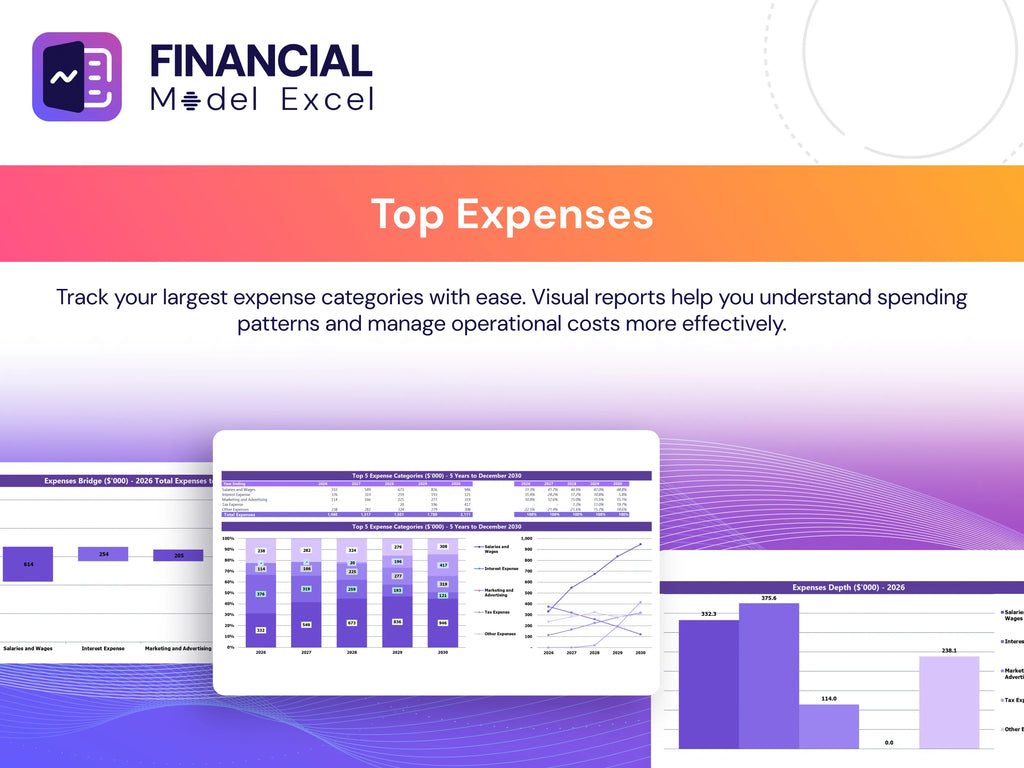
STRUCTURAL DESIGN FINANCIAL MODEL FINANCIAL PROJECTION EXPENSES
Costs
The structural design financial model template in Excel is an essential tool for accurate cost estimation and financial planning in structural engineering projects. It enables comprehensive budgeting, cash flow modeling, and scenario analysis to forecast expenditures and resource allocation effectively. By integrating risk analysis and financial sensitivity techniques, this model highlights cost-saving opportunities and high-priority areas, enhancing the project’s financial viability. Ideal for business plans, it supports investor pitches and loan applications through detailed investment analysis and capital budgeting, ensuring informed decision-making and long-term economic evaluation of structural design projects.
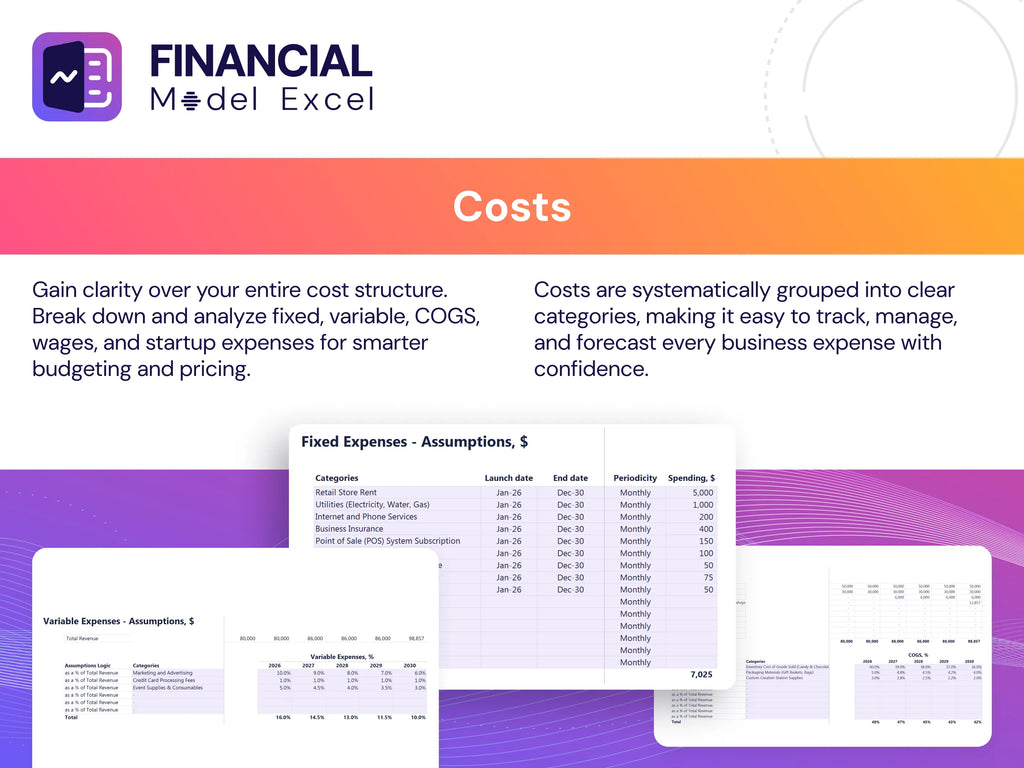
CAPEX Spending
The capital expenditure forecast in structural design financial models reflects total investments in property, plant, and equipment, enhancing operational competitiveness. Our report details capital budgeting for structural engineering projects, highlighting how expenditures drive asset efficiency and improvement. This analysis excludes salaries and general operating costs, focusing solely on tangible asset investments. Given industry variations, understanding these expenditures is crucial for accurate financial planning and scenario analysis in structural design projects. Effective cost estimation and risk analysis further ensure robust long-term financial viability and profitability modeling within structural engineering financial models.
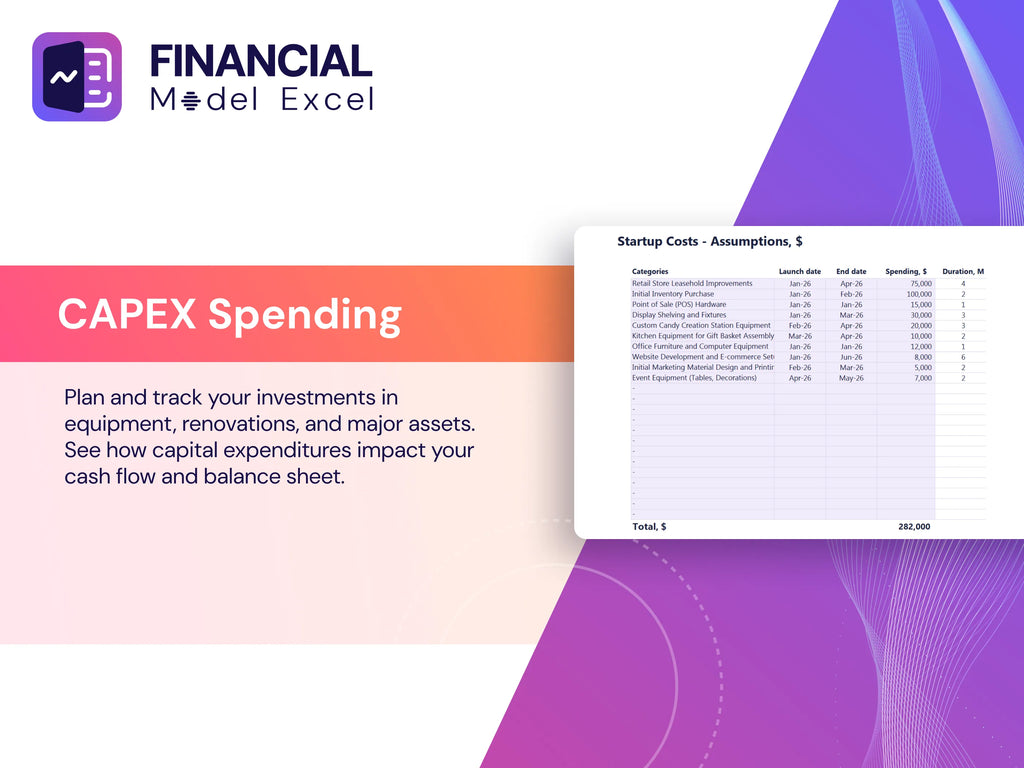
Loan Financing Calculator
Effective loan repayment schedules are crucial for startups and growing companies, directly impacting cash flow modeling for structural design projects. These schedules detail principal amounts, terms, maturities, and interest rates, serving as key inputs in financial planning and budgeting within structural engineering financial models. Accurate repayment tracking supports cash flow forecasting, risk analysis, and financial sensitivity analysis, ensuring reliable financial metrics and long-term financial planning. Integrating loan repayment data into structural financial forecasting methods enhances economic evaluation and capital budgeting, ultimately strengthening the structural design project’s financial viability and profitability modeling.
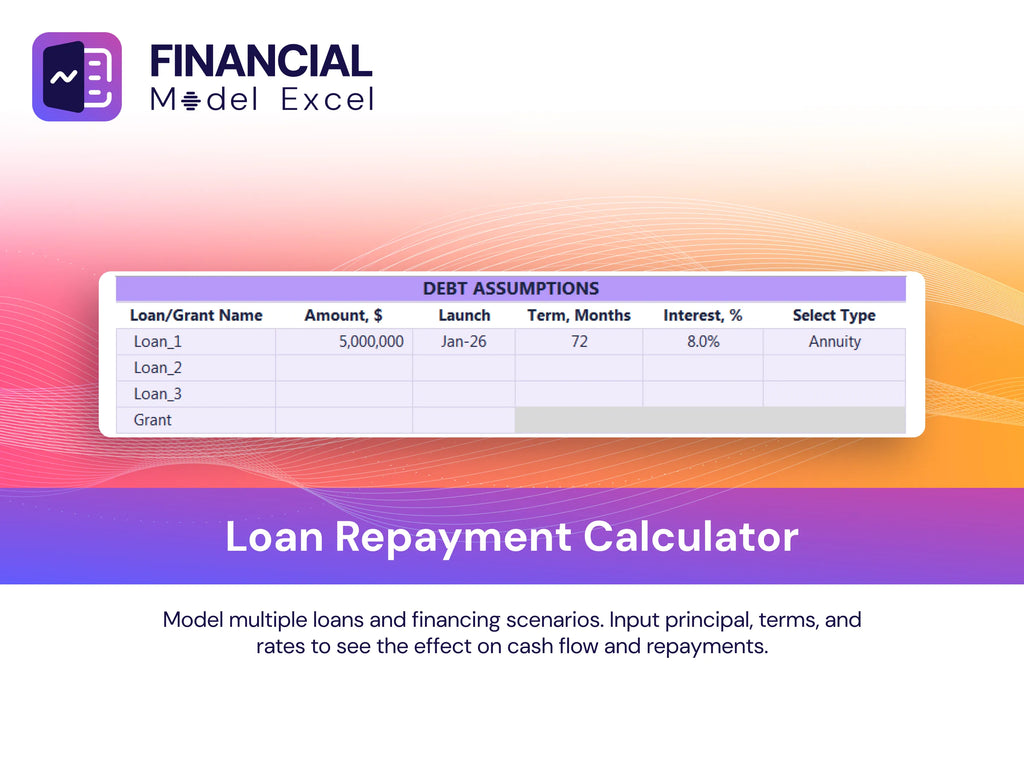
STRUCTURAL DESIGN FINANCIAL MODEL EXCEL FINANCIAL MODEL METRICS
Financial KPIs
EBIT (Earnings Before Interest and Taxes) is a key financial metric integrated within our structural design financial model templates. It captures profitability by subtracting cost of sales and operating expenses from total revenue. Utilizing EBIT enhances financial planning for structural design projects through accurate profitability modeling and cost estimation in structural design financial models. This metric supports investment analysis and scenario analysis, empowering stakeholders to optimize budgeting, risk analysis, and long-term financial forecasting methods essential for the economic evaluation and financial viability of structural engineering projects.
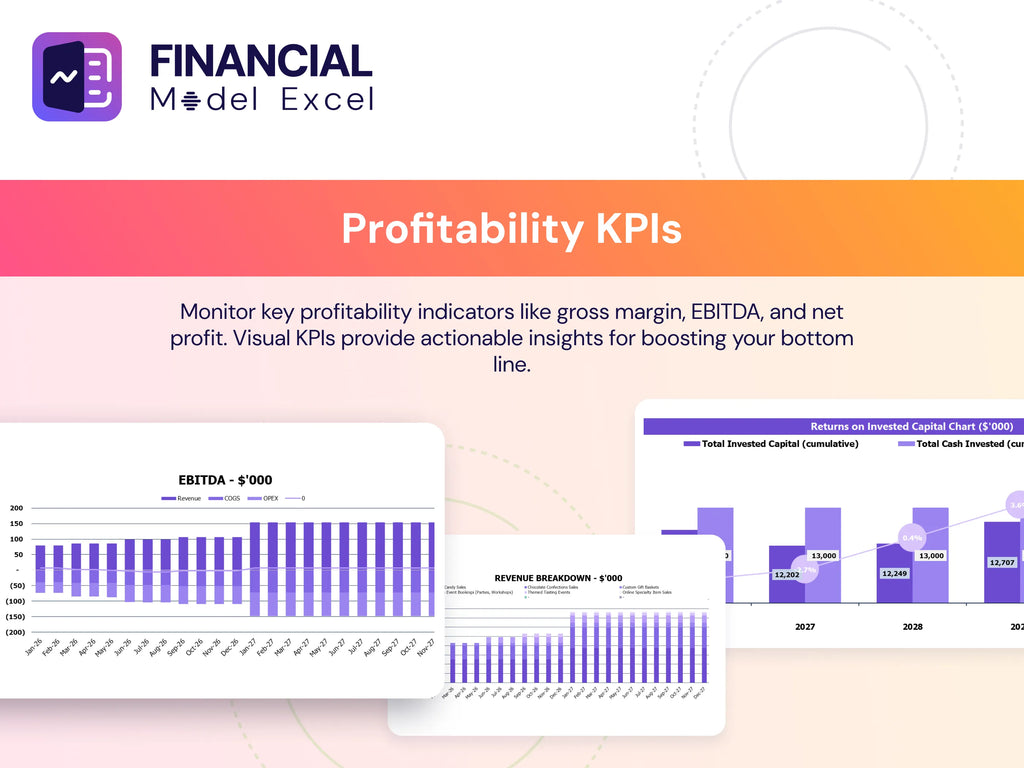
Cash Flow Forecast Excel
The cash flow statement in structural design financial models meticulously tracks all inflows and outflows over a specified timeframe, categorizing them into operating, investing, and financing activities. This essential element of financial planning for structural design projects ensures accurate cash flow modeling, aligning the ending cash balance with projections in the balance sheet template. Integrating this within structural engineering financial models enables precise budgeting, risk analysis, and scenario analysis, enhancing the financial viability and investment analysis of structural design projects.
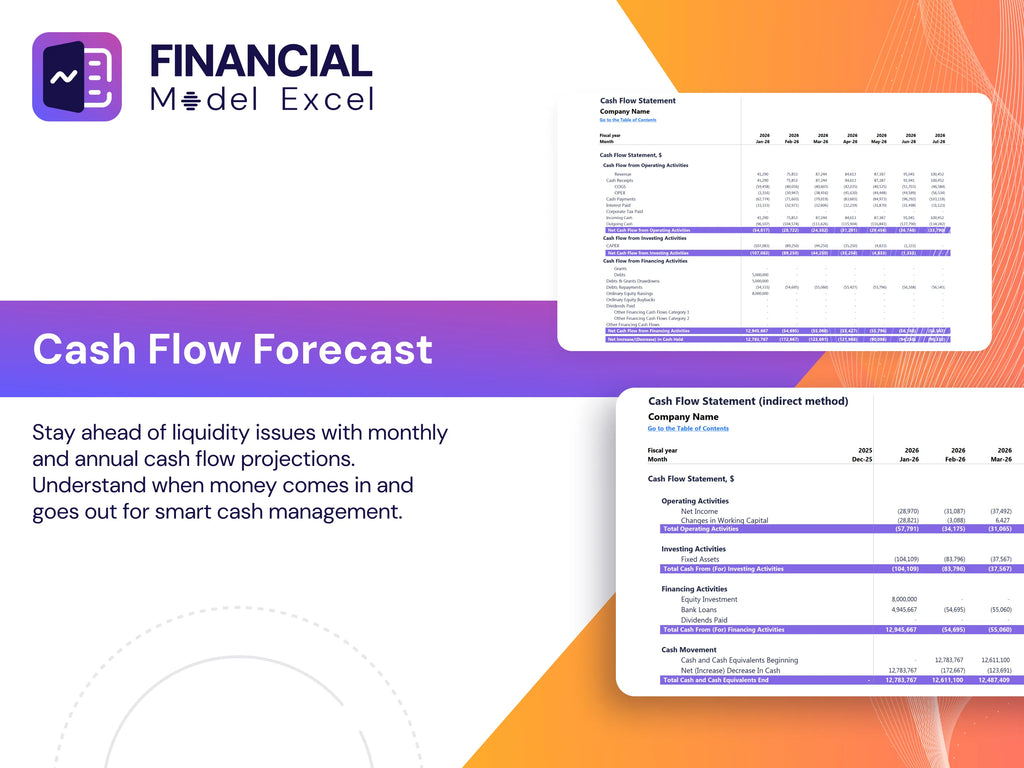
KPI Benchmarks
Leverage our financial model for structural engineering projects featuring advanced benchmarking analysis. Our intuitive benchmarking tab enables seamless industry peer comparisons, highlighting key financial metrics, risk analysis, and capital budgeting efficiency. This empowers companies to assess their structural design project’s financial viability, identify gaps in profitability modeling, and enhance long-term financial planning. Especially crucial for startups, these structural financial forecasting methods provide actionable insights into cash flow modeling, investment analysis, and scenario analysis—driving informed decisions and optimizing project outcomes through precise cost estimation and financial sensitivity analysis.
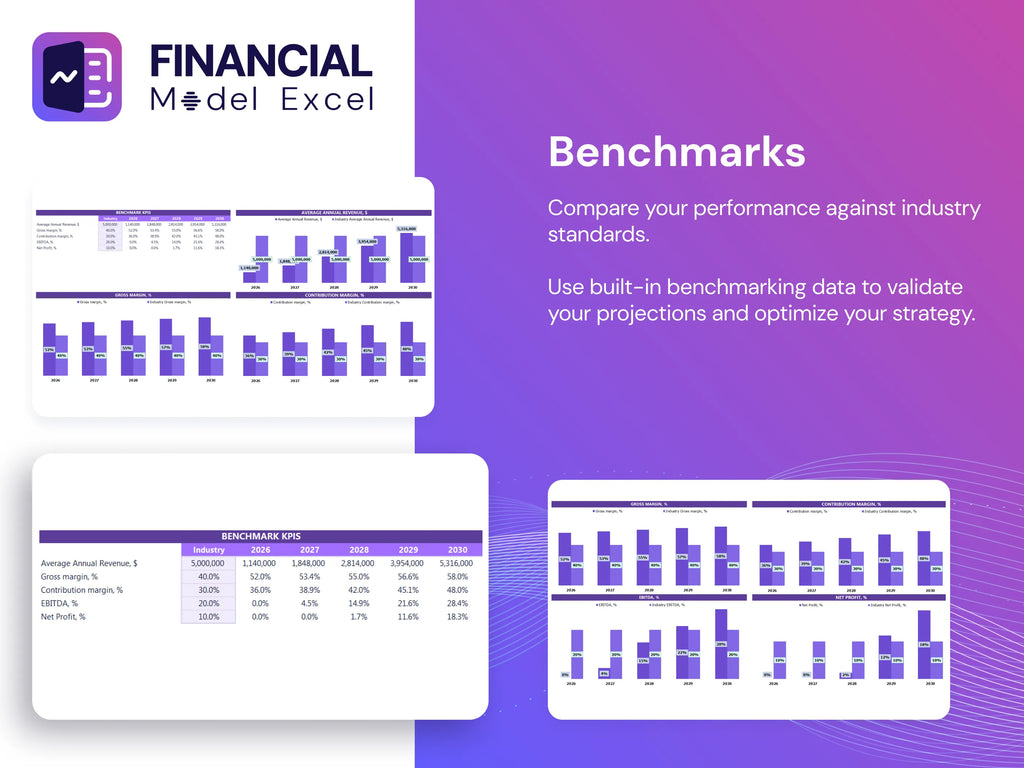
P&L Statement Excel
The Profit and Loss Statement in a structural design financial model highlights key revenue streams and expense categories, providing stakeholders with a clear view of profitability and financial health. This essential financial report supports budgeting, cost estimation, and cash flow modeling, enabling effective financial planning for structural engineering projects. Leveraging advanced forecasting techniques and scenario analysis, it evaluates income, expenses, and loan repayment capacity, ensuring accurate long-term financial planning and investment analysis. Utilizing robust templates, this statement underpins the economic evaluation and risk analysis critical to the financial viability and success of structural design projects.
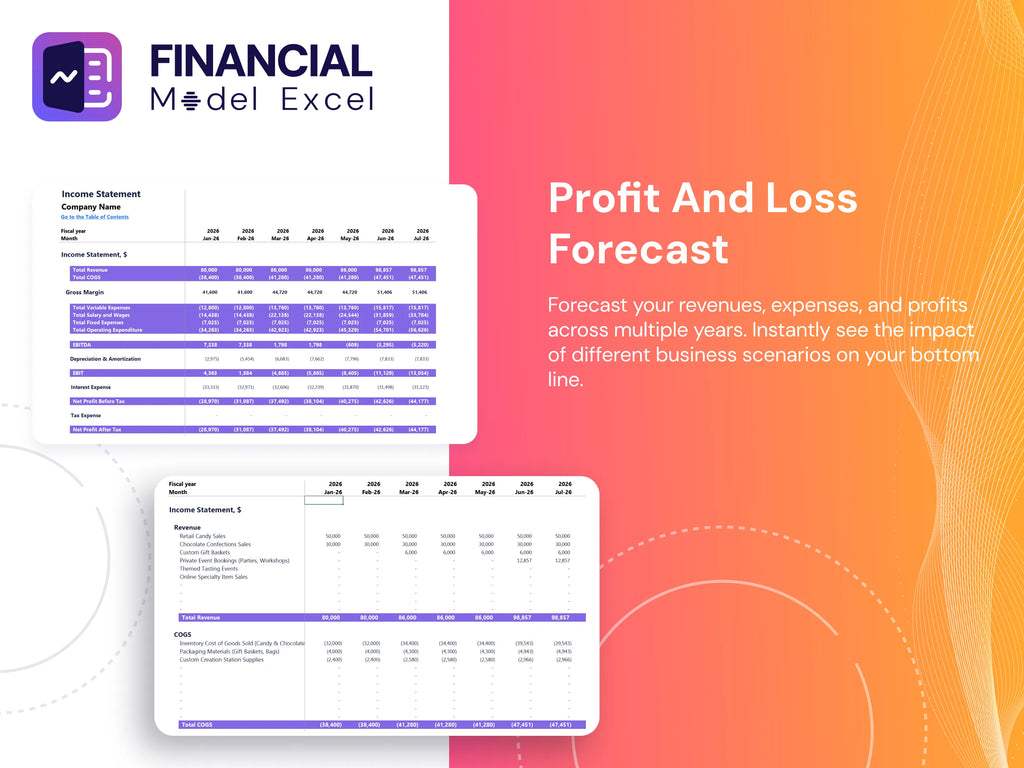
Pro Forma Balance Sheet Template Excel
We incorporated a projected balance sheet template essential for every startup business. This report outlines current and long-term assets, liabilities, and equity, providing a comprehensive financial snapshot. In structural design financial modeling, such balance sheets are crucial for accurate cost estimation, budgeting, and financial forecasting. Additionally, they support financial metrics analysis and risk assessment, enabling informed decision-making for project viability and long-term financial planning.
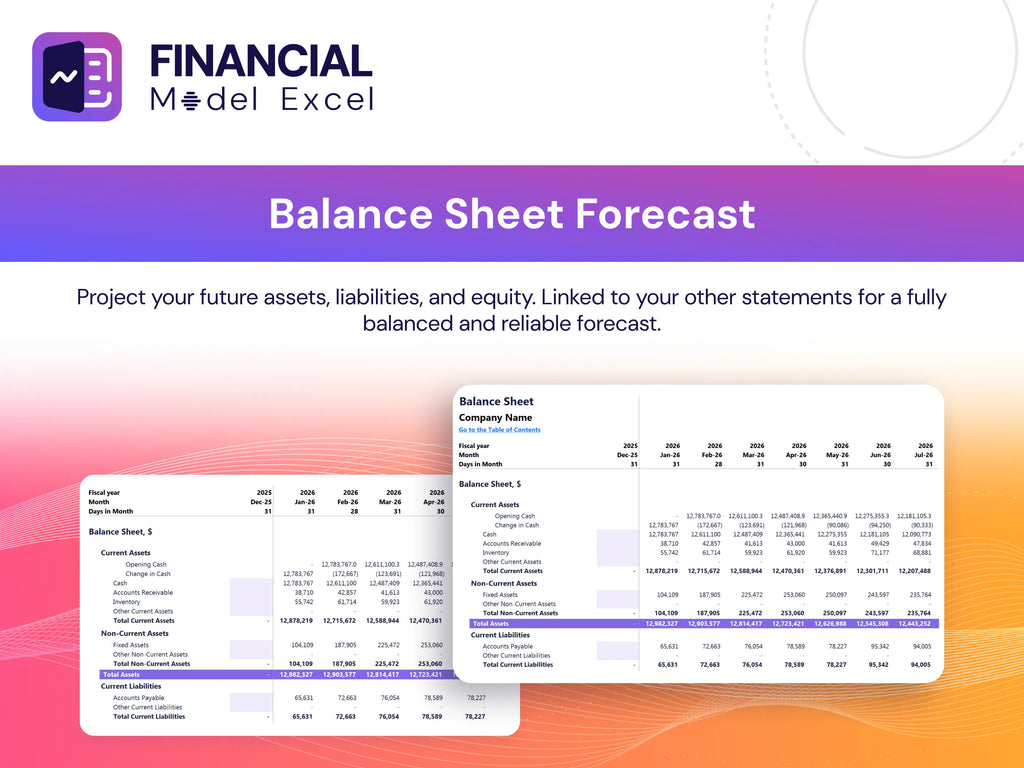
STRUCTURAL DESIGN FINANCIAL MODEL FINANCIAL PROJECTION TEMPLATE VALUATION
Startup Valuation Model
Leverage our advanced Excel financial modeling tools tailored for structural design projects. Perform comprehensive Discounted Cash Flow (DCF) valuations and conduct in-depth financial forecasting, risk analysis, and scenario planning. Our models integrate cost estimation, budgeting, and cash flow modeling to ensure accurate investment analysis and profitability modeling. Designed for pre-revenue companies and long-term financial planning, these templates provide robust structural engineering financial metrics, capital budgeting insights, and financial sensitivity analysis—empowering you to assess project financial viability and optimize economic evaluation with confidence.
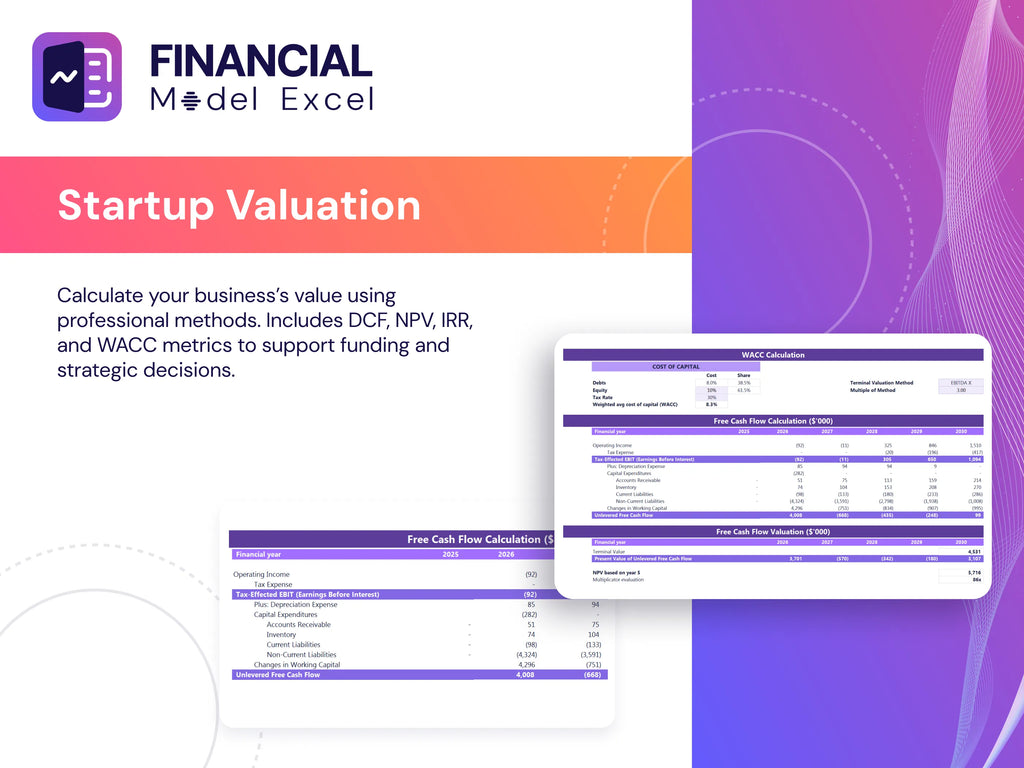
Cap Table
Our financial modeling templates for structural engineering projects include comprehensive cap tables that clearly outline ownership distribution over time. These capitalization tables provide critical insights into investment analysis and financial viability, illustrating potential returns for stakeholders upon exit. By integrating scenario analysis and financial sensitivity techniques, our models enhance budgeting, cost estimation, and risk analysis, ensuring robust financial planning and cash flow modeling for your structural design projects. This approach empowers investors with transparent economic evaluation and profitability modeling, essential for informed decision-making and long-term capital budgeting.
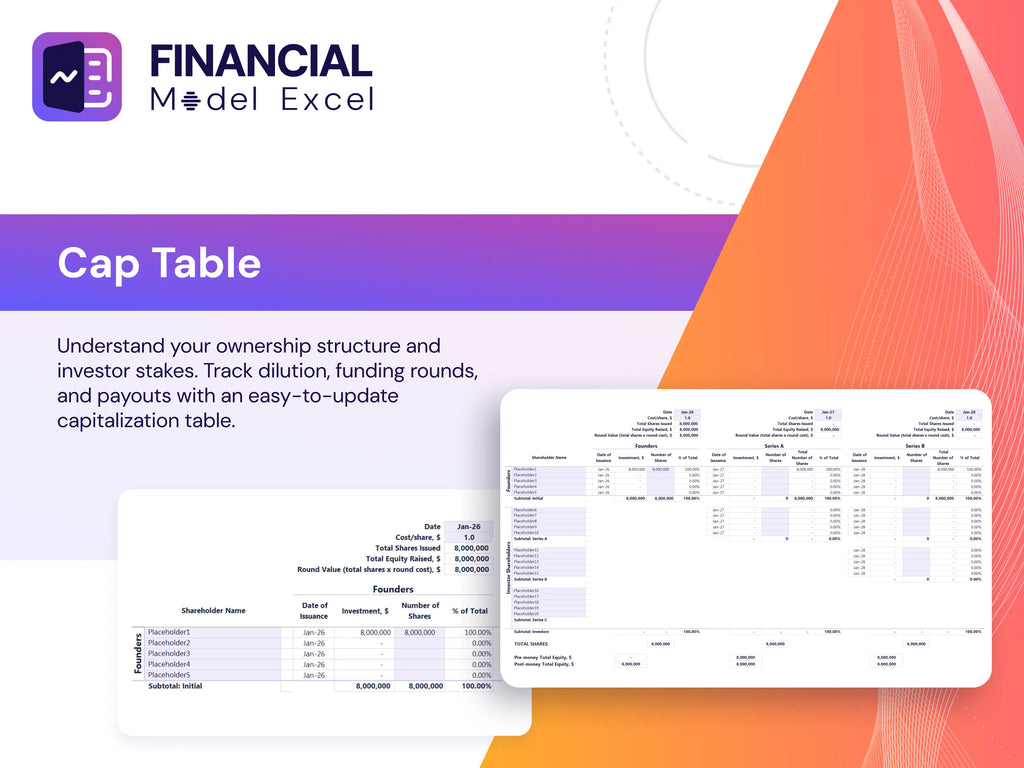
STRUCTURAL DESIGN FINANCIAL MODEL TEMPLATE FOR BUSINESS PLAN ADVANTAGES
Boost project success by assessing feasibility with advanced structural design financial modeling and forecasting techniques.
Set clear objectives for your structural design financial model to enhance accuracy, risk analysis, and strategic financial planning.
Enhance project accuracy and profitability with advanced structural design financial modeling and budgeting techniques.
Optimize startup loan repayments effortlessly using a structural design financial model Excel pro forma template for precise planning.
Enhance structural project success with advanced financial modeling techniques for precise budgeting and confident decision-making.
STRUCTURAL DESIGN 3 WAY FINANCIAL MODEL ADVANTAGES
Financial modeling for structural design projects saves time by streamlining cost estimation, budgeting, and risk analysis efficiently.
Structural design financial models streamline cash flow forecasting, enabling greater focus on product innovation and business growth.
Our financial model ensures accurate cost estimation and risk analysis, enhancing structural project profitability and viability.
Our structural design financial model streamlines reporting with built-in lender-ready financial metrics and comprehensive calculations.
Financial modeling techniques optimize budgeting and risk analysis, ensuring precise financial planning for structural design projects.
Simplify budgeting and risk analysis with our sophisticated, easy-to-use structural design financial model for reliable project success.
Financial modeling for structural design ensures accurate loan repayment proof through precise cost estimation and risk analysis.
Using cash flow modeling for structural design projects demonstrates repayment ability, boosting lender confidence and loan approval chances.
Financial modeling for structural design projects enables precise budgeting, risk analysis, and maximizes investment profitability.
Enhance project success with structural design financial models offering precise cash flow, budgeting, and profitability forecasting tools.





